Interview 050 • Jul 27th 2016
- Interview by Lou Noble, Portraits of Art Streiber by Aeschleah DeMartino
About Art Streiber
Art Streiber is a Los Angeles-based photographer / director specializing in reportage, portrait, corporate, entertainment and advertising projects.
Editorial clients include Vanity Fair, Entertainment Weekly, Wired, New York, Fortune, ESPN, GQ and The New York Times Magazine.
Entertainment clients include ABC, CBS, NBC, HBO, CNN, Fox, TBS, TNT, The CW, MTV, SyFy Channel, Showtime, Universal Studios, Columbia-TriStar, Dreamworks, Paramount, Sony Pictures and Warner Brothers Studios.
Art has lectured at the International Center of Photography, The Santa Fe Workshops, Art Center College of Design, PDN's Photo Plus, Savannah College of Art & Design, ATLAS Institute at University of Colorado at Boulder and at The Stanford Publishing Course.
Links
Foreword
This is our best interview to date.
Seriously.
It is.
It's not my opinion.
It's not something that we're going to talk about, or "agree to disagree."
This is our best interview so far. PERIOD.
I'm sure we'll top it one day. But for now it can reign supreme, heralded by the entire internet as the shining jewel on this here journal.
So read on, pay attention, and something might just blossom in that grey matter between your ears.
- Agustin
This interview has been edited for clarity and content.
Interview
I saw that you’ve been interested in photography since you were young. What was it? What I haven’t seen in any of the other interviews, was what was it that drew you into photography?
I love the cause and effect. I love the process. If you do this, you will get this outcome. I love the physicality of doing this and getting this other thing. And it wasn’t just the snapping of the shutter; it was the darkroom as well. Being able to go from this blank piece of paper, and it expose it, and take it through these baths, and have this print come out. The process was for me, and still is, magic. “If we put this light here, and do this, and put it down and make it do this, you’ll get this look.” And all these years later, that’s still fantastic to me. My grandfather was a very advanced amateur darkroom photographer. My father was a banker/controller, and I didn’t get that. I didn’t get that you go and sit at a desk and what happens. I’ve very caught up in the “If you do this thing this way, you can do this other thing.” You know, this kind of process, before and after, A + B = C, you know, all those kind of things.
Would you say you’re more interested in the process than in the result?
That’s a great question.
™ The Photographic Journal, 2016
Nobody’s ever asked me that question! That’s fantastic. I love the process…but I do love the result. I think…wow…I think I would say I like them equally. That’s a really good one. You know, I like the process because there’s a lot of struggle. And there’s the overcoming of technical limitations and spatial limitations and math. And the results…I look at the results, and here’s the thing about results: You and I will pick up a magazine, and we’ll look at the magazine, and we have no idea how hard it was to get that shot done. Or what it took to get that shot done. We can’t relate. We just see the result on the page. So, in that way, the result is almost a letdown…
Because it doesn’t communicate that struggle.
It can’t possibly communicate the struggle. And I’ve started saying, a lot, on my shoots lately, “Well, we’ll never see this on the page.” And it’s true. You just won’t see it on the page. Not only because we’re professionals, and it’s our job to get it done. But also in the age of digital…and manipulation… Usher – Art Streiber
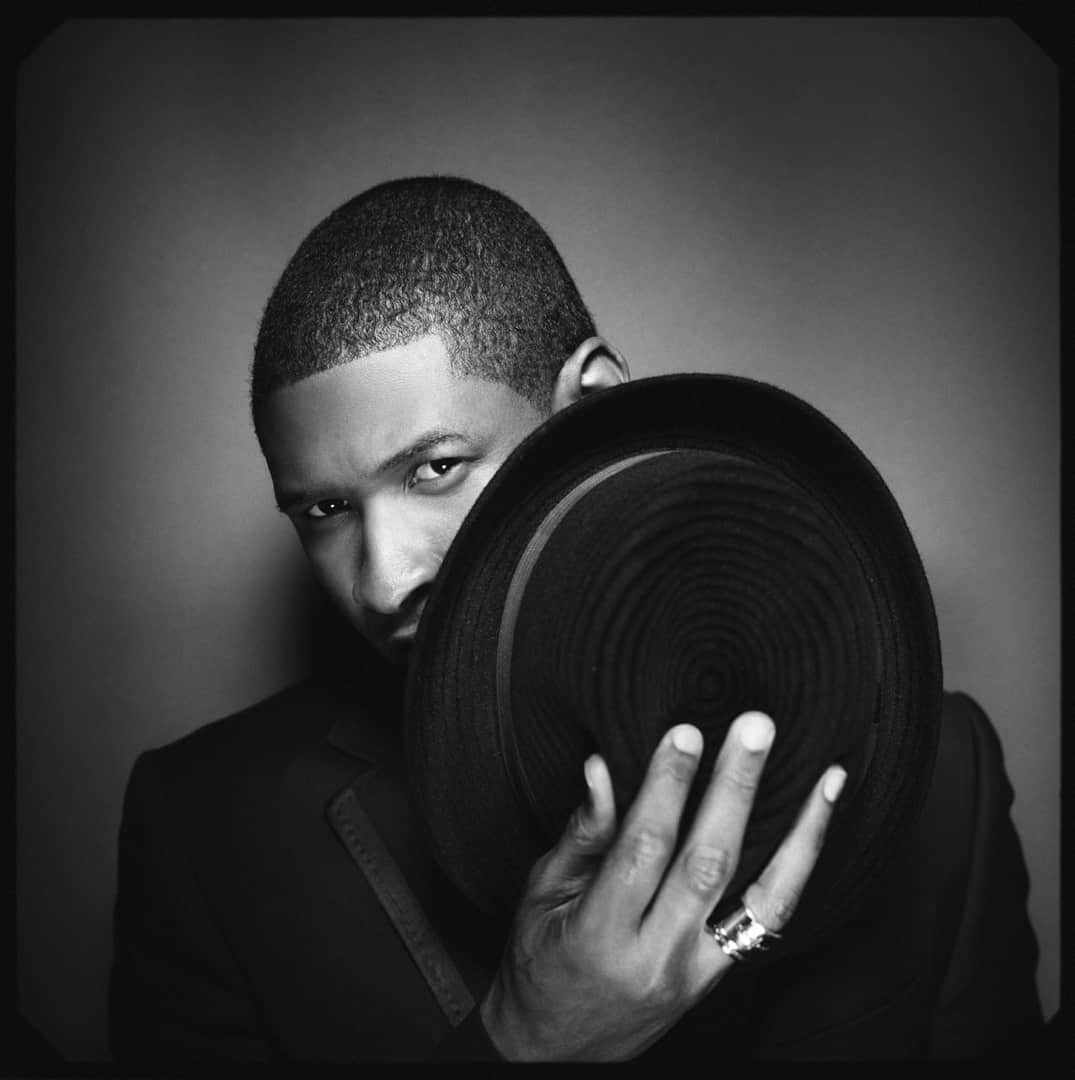
It used to be, you’d kind of implicitly know that whatever they did would have taken a lot of work.
Exactly.
They only had so many tools.
Yes, yes.
I’ve been following your work for many years, and I’ve seen your style evolve over time. When you were starting out in photojournalism…who were the photographers you wanted to be? Who did you look up to?
Nobody’s ever asked me that question. Amazing and fantastic. I did idolize the photojournalists. I thought I was going to shoot for Time or Newsweek or Life, and all of those White House photographers; I was looking at Time Magazine, and I was looking in the gutter. It was It was David Hume Kennerly, Dirk Halstead, Bob McNeely, Michael Evans…all of the greats from the 70’s and 80’s…
It definitely wasn’t portrait photographers. It wasn’t celebrity photographers.
Here’s the thing. In the 80’s, that didn’t really exist. In the 80’s, Annie Leibowitz was still a photojournalist. And it wasn’t until the 90’s…
…there were like three people…
Exactly. Annie, Herb and Matthew.
You have Avedon and Irving Penn…
Yes, but that the 50’s and 60’s. You know, 40’s, 50’s, and 60’s, maybe the 70’s. And then the 70’s and 80’s, man I’d be hard-pressed. Which is embarrassing. But I was also drawn to the decisive moment stuff, like Elliot Erwitt. But I was also drawn to the Avedon and the Penn stuff. Just, I couldn’t relate to it. I’d never seen those kind of circumstances. I watched the news; I absorbed event coverage, so I got that I’m watching a convention, I’m watching a political convention, and it’s 1972, it’s 1976, it’s 1980, and I know that on Monday I’m going to open Time or Newsweek and there’s going to be these amazing photos. I got that. But the whole idea of portraiture and celebrity portraiture, it’s a 90’s invention, in a lot of ways. When Annie was at Rolling Stone she started to create that kind of conceptual, personality portraiture, and then she went to Vanity Fair, and all the rules changed.
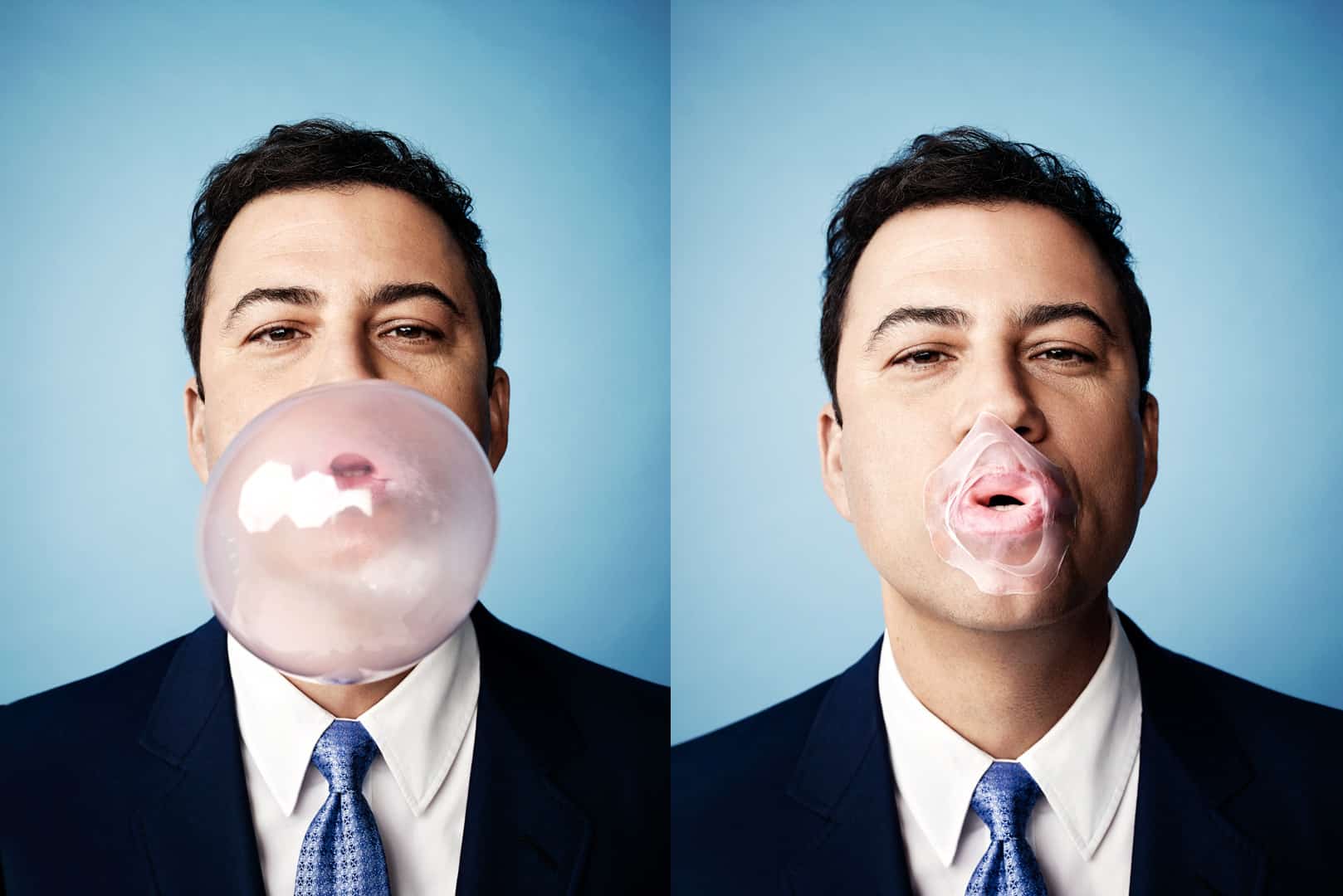
Jimmy Kimmel – Art Streiber
Do you remember when that shift began for you?
Yes, but I’ve been through a number of shifts. So I thought it was all about photojournalism and photojournalism and photojournalism, and I had a trainee-ship at the Los Angeles Times and an internship at the Riverside Press Enterprise, and I had an internship at Life Magazine, but my first job was as a staff photographer at the LA Bureau of Women’s Wear Daily and W.
So I was working for a newspaper, kind of, because Women’s Wear Daily was a daily paper. W came out every two weeks and was a broadsheet newspaper, but it was covering fashion. But W, and its brother publication M, and the short-lived teen magazine called Scene, they required more magazine-y stuff and certainly more fashion. And as a staff photographer, I was being asked to do fashion, portraits, business portraits, events, travel, food, still life. So I had to do all of it, and I was learning on the job. Literally learning on the job, making it up as I went. Devouring other magazines, “How do you do that?” You know, calling one of my best friends who was at Art Center and saying, “How do you shoot food?” And he’d say, “Put the light in the back,” and I’d say, “Okay!” So that was a first kind of shift.
I did that for probably two, three years, and then my wife and I moved to Milan and did the exact same thing in Italian for four years. Then I came back here. I came back here at the end of ’93, so in 1994, if we go into my tear sheets, we will see I’m shooting kids, I’m shooting travel. At that point, I still believe in this “jack-of-all-trades” thing. And slowly but surely, I started to fall into celebrity portraiture, because that’s when People magazine started shifting that way. And then all of a sudden, Entertainment Weekly was born. And there was Vanity Fair and Premiere, and they were doing portraits of celebrities. And a lot of people forget that Vogue, Harper’s Bazaar, Mademoiselle, Glamour, used to only have models on the cover. And now they have celebrities. And a few of them will get away with a celebrity model, but now it’s celebrities.
You know, my wife and I were in the magazine business, and we noticed that all of a sudden, celebrities were stealing fashion magazine covers from models. That was a seismic shift.
How did that change things for you at the time?
Well it opened up the possibility of photographing celebrities for a number of other magazines, other than just the entertainment magazines because “celebrity covers” crept into every corner of the magazine world…like Cigar Aficionado and Popular Science. So now almost everybody is using some kind of personality on their cover, it just opened up a lot of possibilities. That was a seismic shift.
And there was another seismic shift; I fell into this incredible gig in probably 2003 in which CBS asked me to do their Mondo shoot. And I’d never done anything like it before. And we will never do anything like that again.
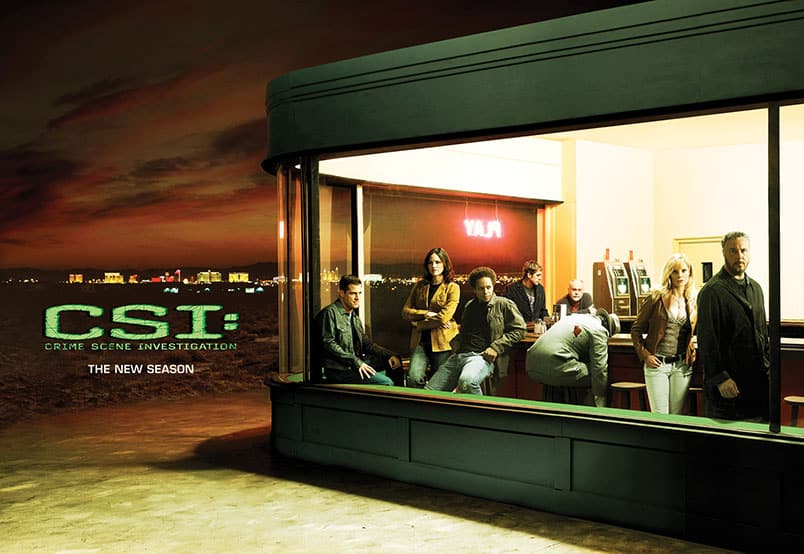
CSI Advertisement, shot next to an office building.
Hahahaha!
Twice a year, for four days. Two days of pre-lighting and two days of shooting, every single CBS show, and what CBS would do is,they would rent an entire studio complex, like The Lot in Hollywood. They would take over three or four sound stages, and they would just run their actors through. Like you’re gonna shoot stills, then you’re gonna do on-air, then you’re gonna do radio, then you’re gonna do PR. So you, the actor, had your designated slot on Saturday or Sunday, and so we were building these insane sets and lighting these insane sets, right next to each other. We built and lit a snowy park scene, a rollercoaster, a diner, a living room…and lit them all to look as real as possible.
We had free reign, and on a lot of these, these shows had two or three sets. It was insanity; I was just thinking about this the other day. We hired sixteen photo assistants, and when the grip truck from Screaming Broccoli arrived, they would back into the stage, and we would set up shelving and create a grip room.
So let me ask you, because it brings me to something I wanted to discuss: there are a lot of ensemble shots in your work, you have a section for it on your site, and I think it’s one of the things I keyed into when I first started following you. For the people involved, like for the people in CSI, how do you direct multiple people at the same time?
Another fantastic question. You’re four for four.
Haha, now the pressure’s on.
I would say! So, years ago, one of my best friends who went to USC film school and now does a lot of video production said to me, he was on my set, and he said, “You’re a director.” And I said, “No I’m not; I’m a photographer” He said, “Trust me, you’re a director.” And I didn’t know what he meant. Then I realized that’s a really important, powerful thing to keep in mind. That, especially actors, they want and need direction. Because in the absence of lines to recite, a character to inhabit, blocking to work through, and emotions to get through, they are a blank canvas. And they want and need direction.
They’re adrift, otherwise.
Some of them are, yeah. So, when photographing a group, you need to have conflicting macro and micro visions…you have to see the entire space, the entirety of the group and you have to see every single person in the group as an individual. So if I’m looking at this picture (CSI shot, again), I want to make sure that we don’t have two people with the exact same body language. That just drives me insane, that two people would have their arms crossed. Or that two people would have their hands in their pockets. So I’m very carefully tweaking and tweaking and tweaking, and you have to immediately remember all their names, so there’s a piece of paper with everybody’s name on it, and then making sure you don’t leave somebody out. Making sure that everybody gets called out, and invariably there’s always one actor who just who isn’t playing, and you’re calling him out over and over again much to the chagrin of the others. So it’s tough, but it’s fun.
Were you actively trying to develop your communication skills as time went on? Because it requires an immense amount of communication with your subjects, with the client, with the agency…and you seem to have a real facility for it. Was it something that you’ve always had or something that you had to work on?
I think it’s a 60/40, 70/30 proposition. I’ve always been a communicator, but I’ve realized that I need to be more of a communicator in certain situations, or I need to communicate in a particular way. I remember the very first time I had four photo assistants on the job. We were at the beach, and nothing was happening. I thought, “why aren’t these guys doing anything?” And then I realized, oh right, I have to explain to them what I want. You know, I have to direct them and inspire them and motivate them. Then I’ve got to communicate with the publicist or the manager; then I’ve got to communicate with the client, the magazine editor, the design agency, the advertising agency, then I have to talk to the talent. And I realized that I was now communicating across a broad spectrum.
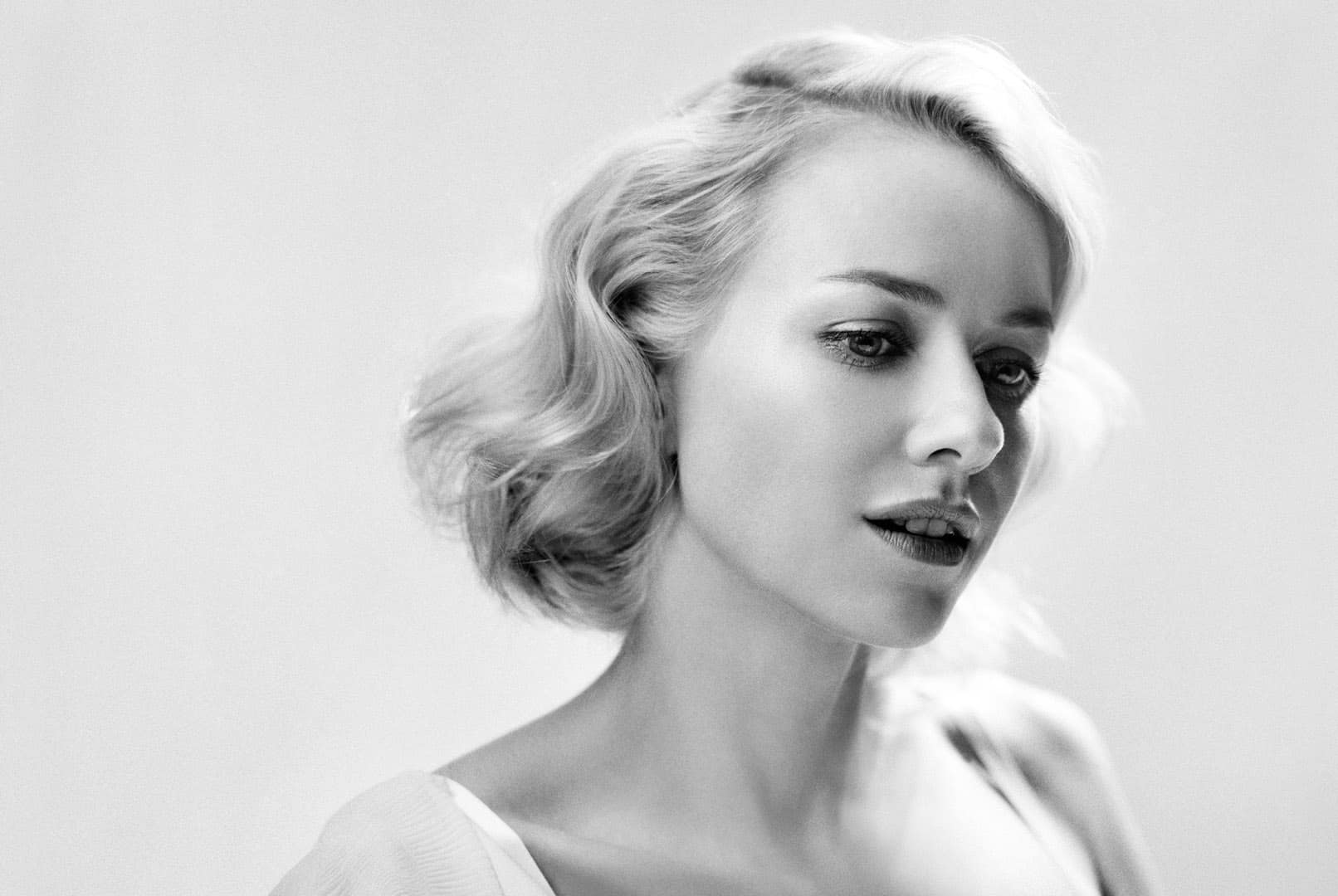
Naomi Watts – Art Streiber
Was it something that you ever had trouble with?
Oh yes, yes. Absolutely. Yeah, because I have, to my detriment, an acerbic sense of humor. And it takes a while for folks to tune in and get it. And it’s cost me, it has absolutely cost me with a couple of clients. I never meant anything by it; I was just kind of misinterpreted. So yes, I’ve learned a number of different skill sets in terms of communication. I’m still learning; I’m still learning patience. I’m learning when to push and when not to push. Yeah, I’m learning.
Was that an interest of yours? Was that something that fascinated you or was it something you sort of fell in to?
Oh my gosh, yes. It’s always fascinated me, and one of my great regrets is that I didn’t take psychology or sociology in college. But I am fascinated by psychology and sociology and what everybody’s bringing to the table and their preconceived notions and the chip on the shoulder and the insecurity and the “what do they need” or “what don’t they need.” That’s huge for me, huge.Yes. It’s all about reading the room.
With a difficult subject, what’s your approach? Especially with celebrities because celebrities can be difficult, at times.
Yeah, I think I’m trying to read them, and I want them to understand and believe that I have their best interests in mind. And what I’m hoping is, that they will then not take advantage of me, but will then say, “Okay, I will collaborate with him, because he knows that I am sensitive to this, or need to get out of here in fifteen minutes.” Or whatever it is. We just photographed a guy who is on the air, and I wanted him to hold a baseball bat. Nobody had prepped him for the baseball bat thing. So I said, “I’ve got this baseball bat; I have an idea.” And he says, “Oh my god no, that’s completely wrong.” I mean, he hadn’t even been on set yet, and the room is just going down. I said, “Okay, this is just a suggestion; I’m looking for some kind of iconic, ‘fast read’ that says Baseball, even though you’re wearing a suit. But it could be the ball.”
“Well let me think about it.” And I said, “Well, I just want to assure you that I want you to be comfortable, because I want the best photo.” He said, “Well it could read this way.” And I said, “Yeah it could read this way or it could read that way.” But what I will try to do is have examples of other images, and I showed him how an iconic prop tells a story. “Oh yeah, I see that, okay, alright.”
So with a difficult subject, taking his or her temperature and doing the best that I can to ensure them that I want to elevate them. I’m not there to make them look bad. I’m there to make them look interesting, noble, heroic, but I still need a moment.
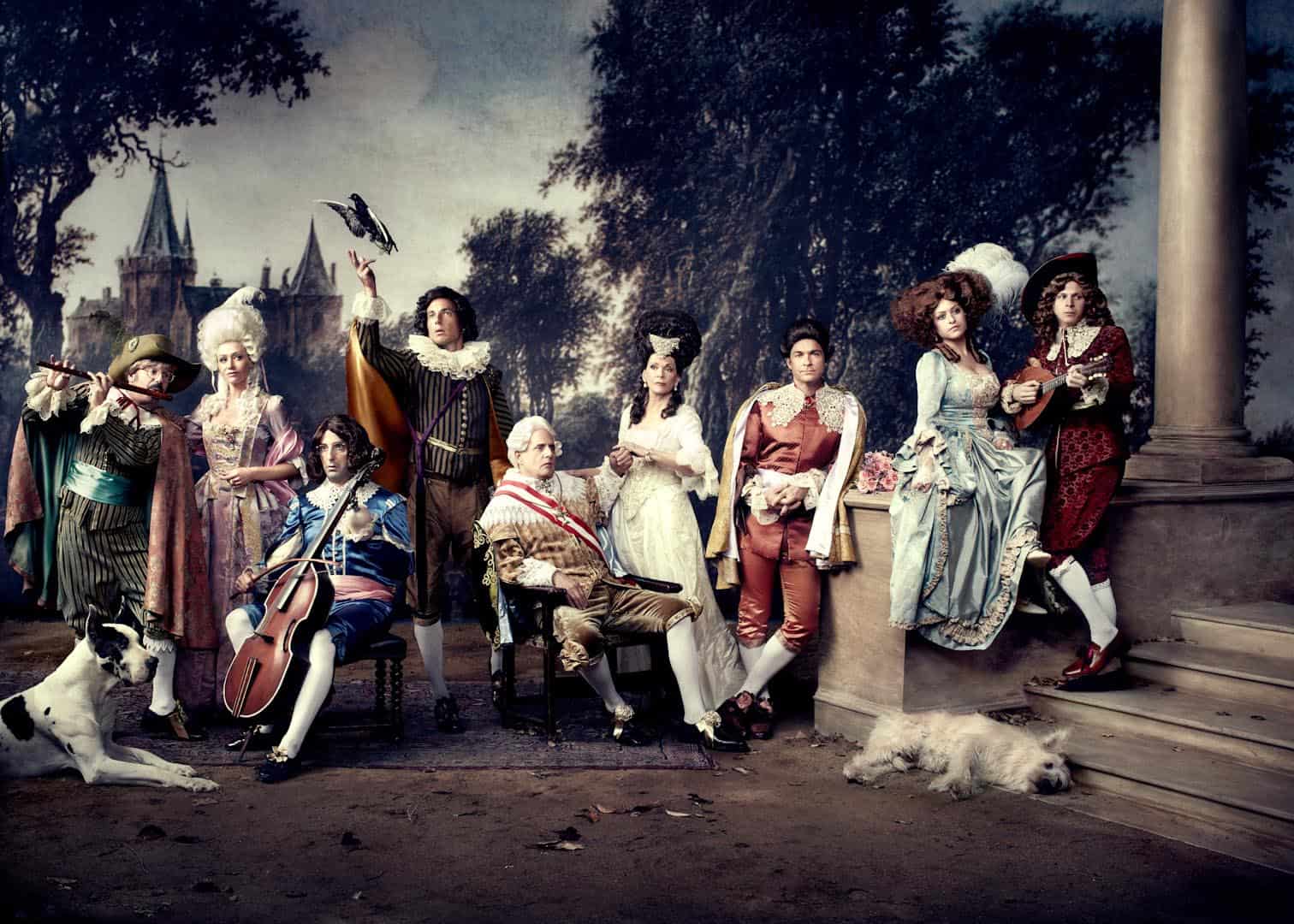
The cast of Arrested Development – Art Streiber
I’m sure it’s different depending on the job, but when you think of your work as a whole, what is it you’re trying to convey? What does your work say about you as a person, a photographer?
I would like my portraiture, my imagery in general, to stand the test of time. I would like my portraiture to be a slice of that person at that time. And lately I’ve been saying, to whomever will listen, that “this picture isn’t about right now. This picture is about twenty or thirty or forty years from now. So as big of a pain in the neck these five minutes are right now, and as t fleeting as this picture is for us, it’s really for future generations to look back as a snapshot of our times. If I say Winston Churchill, you say, “Yousuf Karsh.” If I say “Steve Jobs”, the image that comes to mind is the portrait of Jobs by Albert Watson which appeared on the cover of the Jobs biography. And regardless of whether of not you know the name of the photographer, it’s that icon portrait that sticks with you. The portrait should be enduring and provocative which is harder and harder to do in 2016, in the age of image the iPhone and the millions and millions of photographs that are being created every day.
Is that something that you have always…
No, that only came to me, honestly, in the last couple of years. You know as we progress, as we get further and further along, there will be more and more iconic imagery, but let’s just go with Princess Diana, the Mario Testino photos. The difference to me is did you get A picture or did you get THE picture?
Has your process changed since you’ve begun to focus on that?
The process, probably not. I don’t think I’ve changed the process to accommodate that belief system. Although, I will say to whomever, “You know, we should really photograph him in his office.” Because that environmental portrait, there’s going to be another layer to the story, besides just that, which has a lot of value. So yeah, I might push a little bit harder, but I don’t think the process has really changed.
Has anything changed?
As a result of?
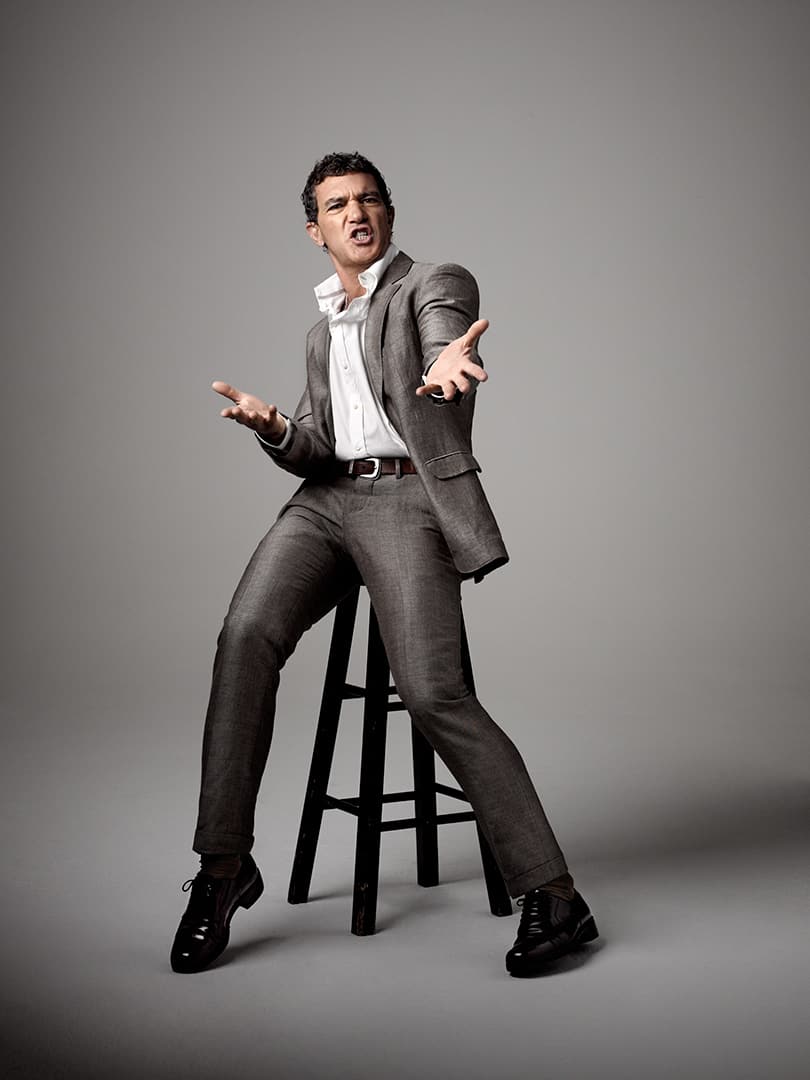
Antonio Banderas – Art Streiber
As a result of wanting to take THE picture.
That’s a good one…and I think the answer is yeah. I’m pushing to find something original and unique and thoughtful, because there’s a lot of photography out there.
You know, I’ve noticed that!
Yeah, there’s a lot of photography out there. I just did an assignment, and this happens a lot, especially with the captains of industry, “He has no time! They have no time, they have no time, they have no time!” Okay, but I’m going to get there 3-4 hours early, and we’re going to have everything lined up, and I know it’s not a performance piece for these guys. You know these guys aren’t going to laugh and juggle and flame throw and jump up and down. So I know that if I can get into this situation and have them do this or do this and engage them, in their space, I can get away with two rolls of film, forty frames. Three rolls of film, sixty frames. So then, we can move on to the next situation, and in so doing, I can get a lot more than just one set-up.
We were literally told, last week…[Editor’s note: at this point, Mr. Streiber, upon noticing our photographer is shooting Fuji fp-100c peel apart film, stops the interview He then instructs our photographer to go into the office kitchen and pull out several packs of Polaroid film from the fridge to shoot with. Mr. Streiber is, as my people would say, a mensch of the highest order -L]
So I want to maximize my experience with them. I want to get as much imagery as I can. I want to show the client, the publicist, that it can be efficient and smart, because the truth is, we are, a lot of the time, just cleaning up the mess that the last photographer left us.
Hahahaha!
You know, that’s not derogatory; I’m really big believer in bringing a level of professionalism to the experience, especially nowadays. So if I’m going to an office building to photograph executives, I’m not showing up in flip flops and shorts and a backwards baseball hat. I want to elevate this profession for all of us; again, especially given the context of the times which is, everybody’s a photographer.
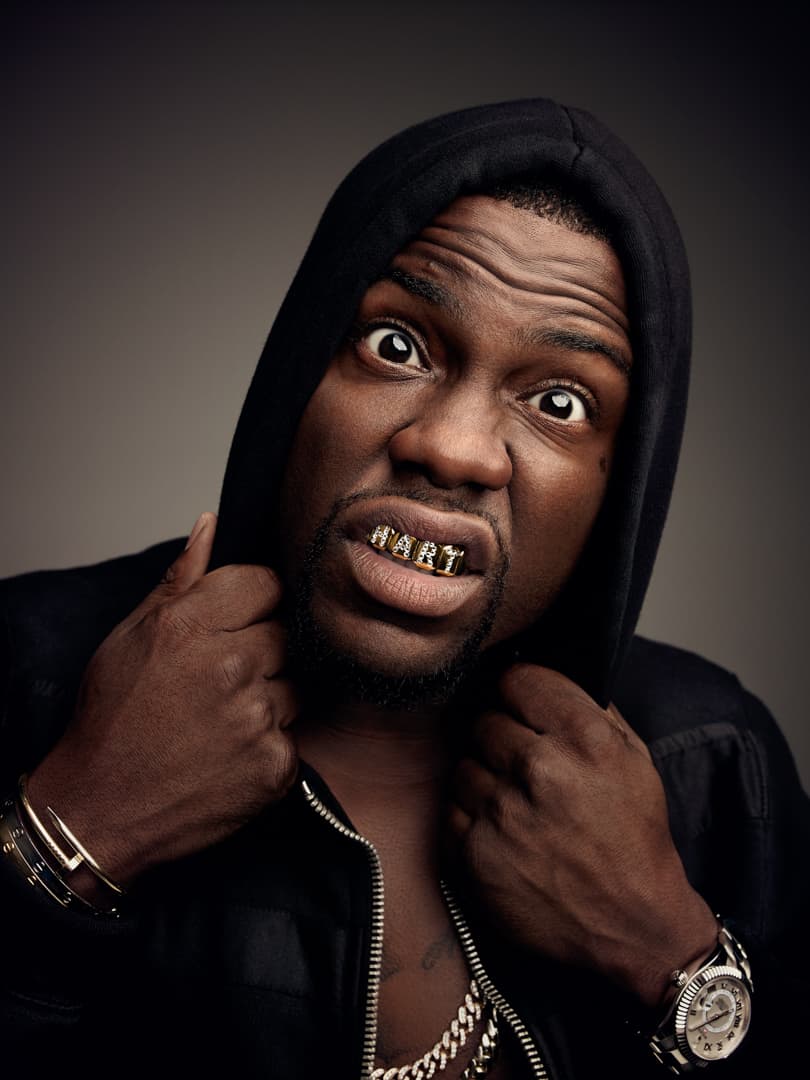
Kevin Hart – Art Streiber
So within that particular situation, do you make time for The Shot for you, or is it the shot that the client wants is also that iconic shot you are looking for? Are those two separate things?
I think that’s a whole different question. The question is; what does the client want? What do they think they want? And what do you want? And if those things aren’t in sync, then maybe you’re not right for the client. And I’ve been down that road. But you reach a point where if you’re going to hire Dan Winters, you’re going to get a Dan Winters shot, and you’re okay with that and you’re psyched. So I am hoping that I’ve reached that place where they’re coming to me to say, “We want you to do what you want to do.”
But I’m almost accommodating to a fault. I ask, “What do you guys want to see?” “We want to see this, we want this, we want this.” So then I’m coming to conversation saying, “Okay, that’s a great idea” or “You know, I don’t think that’s as effective as this.”
But you’re still trying to get them what they want.
Oh yeah, I want everybody to be happy. And the truth is, on that shoot when we were shooting to two executives, we did two version of singles each and three versions of a double, of the two of them, in I think, inside of forty-five minutes. And we just got the order in yesterday and the photo editor said, “Oh my gosh, there’s way too much to choose from.” Which is kind of good news and bad news. Because the good news is that I’ve done the job for them, but the bad news is they’re not going to run That one. But I want them to be able to go, “Oh, we can use this for the TOC. Oh instead of using this for a single, we could run it as a double.”
An embarrassment of riches.
Exactly. I want to inspire the designer and the editor-in-chief to give this six and eight, and not four pages, if possible.
An actor is trained to give you a performance. If you’re trying to get something beyond that, is it difficult to get something authentic from someone whose craft is artifice?
It depends on the context and it depends on…my question always is “what’s this story about? What do we want, what do we expect to see? What’s going to help us drive the reader into the piece? Again, just with editorial photography you are compelled to, as you’re thumbing through the magazine, you are compelled to stop for one of three reasons.
Sex.
There you go! Two, the image itself draws you in. Or three, the topic is something that’s near and dear to your heart. So I don’t know that I’ve ever worked on the story where the word “sex” was in the title, so I’m left with…
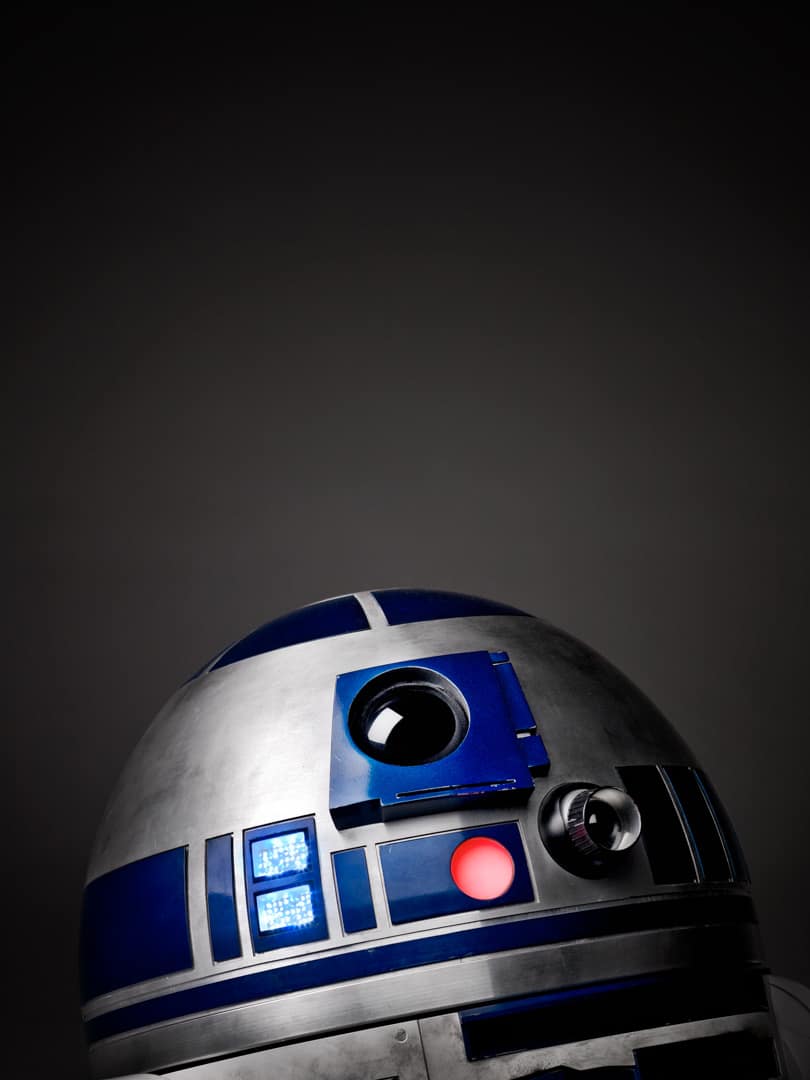
R2D2 – Art Streiber
Put it on your bucket list.
Haha! Either you are interested in these guys or this story or this woman or this company or this celebrity, or the image better be amazing. So I’m there to get the amazing image. So, depending on what the story is, I want to help tell that story, and everybody’s guarded. Everybody’s got this thing that they are protecting, and then everybody’s got this thing that they are projecting, over different stages in people’s lives or careers they’re trying out different things. Or they are just terrified of being in front of the camera. So each of those is an opportunity to have to deal in some way, shape, or form. So I think that takes us back to that other question about psychology and just reading the room. Understanding “what do they need and what do I need them to do in order to get a great portrait?”
We interviewed Chris Buck a while ago, and something that’s always struck me about his process is that, in a lot of ways he looks for tension. You seem more collaborative, but do you ever work in opposition to your subjects to get what you want?
Wow, I’m a big fan of his work, and I’ve never used that word to describe my process, I’ve never thought of it as tension, because I want the experience for everybody to be enjoyable. Or easy, which is the exact opposite of tension…you know, that’s interesting. I think there’s tension if and when I’ve got, as I described to you with the baseball bat, I’ve got an idea and then I’m convincing. And I’m picking my battles.
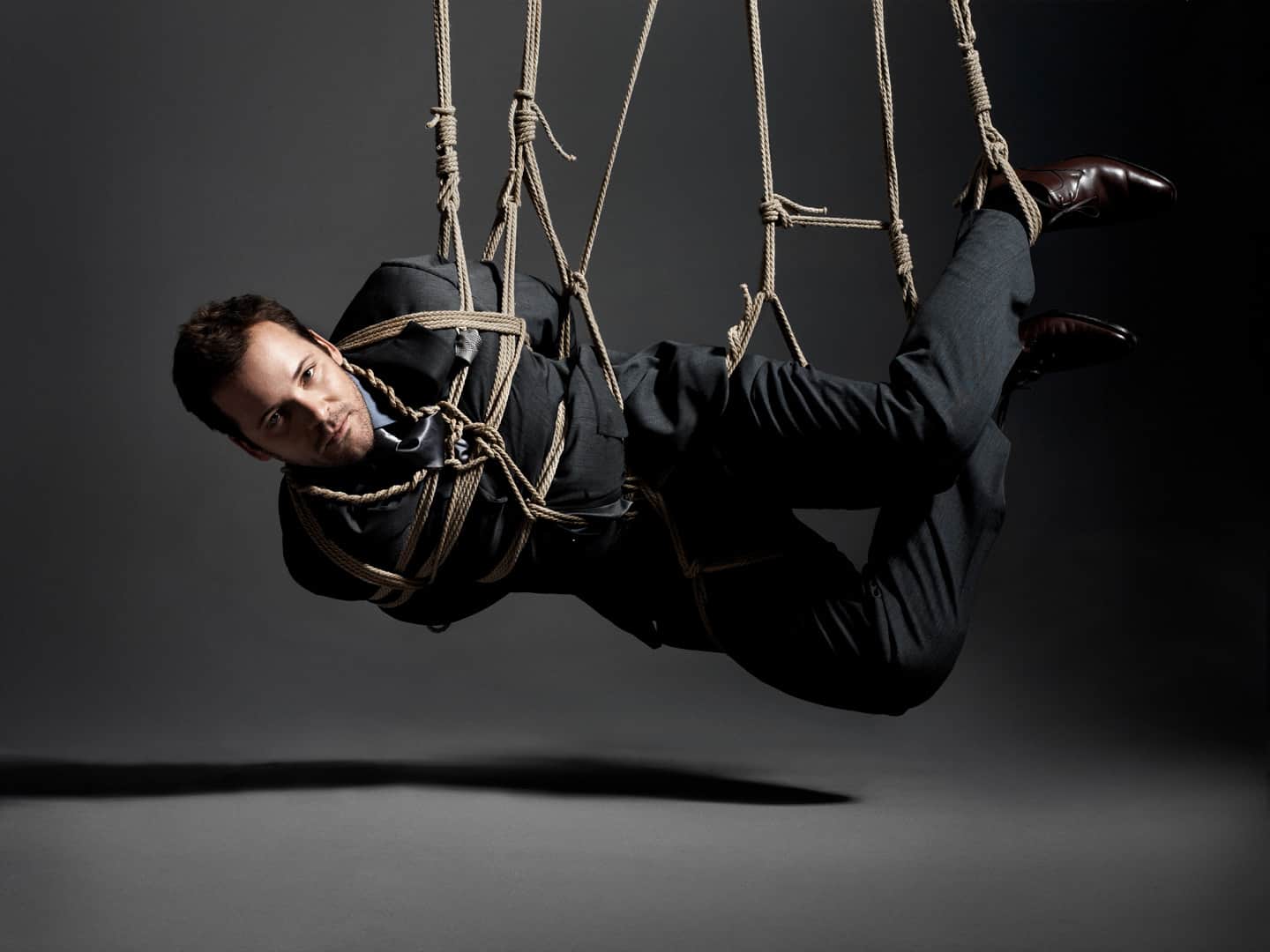
Peter Sarsgaard – Art Streiber
But you want them on board.
I do. I want them on board. You know, I’d love to read that Chris Buck interview because…we may not be using, or I might not be understanding Chris’s definition of tension. Because I don’t think he means combative.
No, no he’s not trying to be combative. I think it’s more of, if I understand correctly from our discussions, it’s that certain level of comfortable or unease is revealing, in a way that someone who is completely comfortable is not.
Fair enough, yeah, and you can see that in his work, and it’s fantastic.
Agreed! So, let me ask you about failure. Are there times still where you feel like you didn’t get it?
Absolutely.
What happens, there?
I am Monday morning quarterbacking it, and trying to figure out what got me to that place. A couple weeks ago, I think we had too many setups. We wanted it all, and our subject was two hours late. And we still tried to do five set-ups! So instead of really massaging two or three set-up, we hustled through all of them. So there’s that. And there are moments, there are times, where I just can’t get the light to do what I want the light to do. But I push through; I keep going. “Try this, try this, try this,” and I’m watching the clock. Because I want to figure it out. So I think it’s fair to say, that I’m trying to design the experience as much as possible to minimize the failure, and that just comes with experience.
I was curious about the New York Times Women in Film piece. We interviewed Jill Greenberg a while back, and after that piece came out, she and some other photographers had a complaint, not with you, but that a man was chosen for the project. Did you hear any of that criticism, or have any thoughts on that criticism?
What I will say is that I think there was some legitimate arguments made on both sides, but in this day and age, in which the discussion is on a social media platform, I don’t think that one gets to really treat either position very thoughtfully. Because there isn’t “sitting down” and there isn’t discourse. There’s an opinion, and then another opinion, and then one opinion gets buried, and then somebody else weighs in. Regardless of the argument or the discussion, having that play out in social media is not optimal. Because like I said, there are legitimate points to be made on both sides. And the thing is, I never weighed in, and that can be detrimental as well. Tough one.
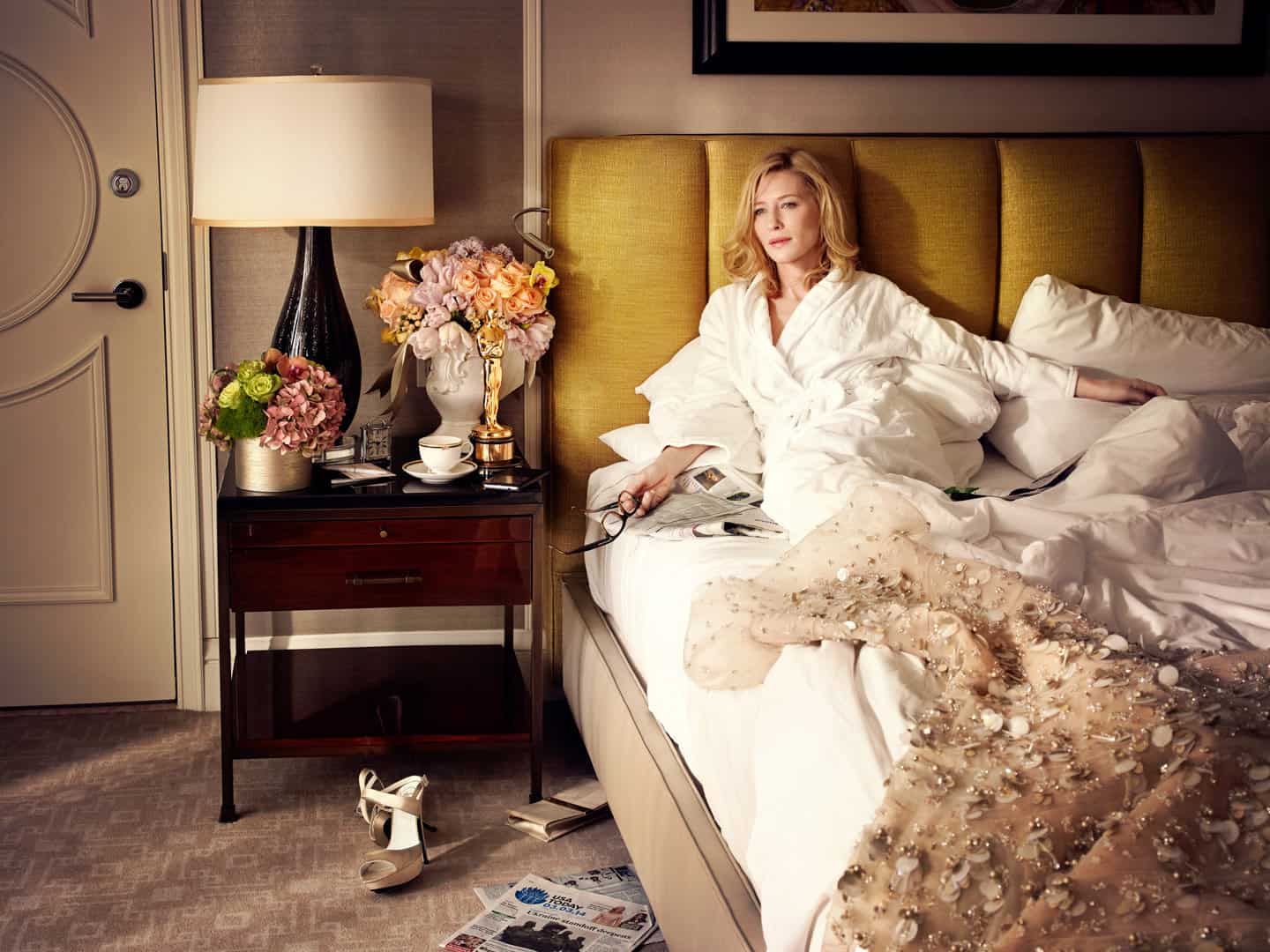
Cate Blanchett – Art Streiber
To the best of my knowledge, you haven’t really had much controversy in your career.
Not public, no!
Hahaha! Do you have a lot of photographer friends? I know you are very up to date on culture, what’s going on, but are you involved in the conversation with your friends about trends and things of that sort?
Absolutely, oh my gosh, yeah. Two of my best friends are photographers. And there’s a second circle and a third circle. I think it’s important; I encourage it, absolutely, yeah. And at least twice a year, I think I’m identifying some kind of trend that I want to bring to other people and say, “Are you noticing this? And how are we going to react to it?”
What do you feel has been going on, lately?
Well the most recent, like in the last month trend, that I’ve noticed is that…years ago when I would lecture, I would tell people that when I first started and we were shooting film, a monthly magazine would “close” six weeks before it hit the newsstands. Which meant that there was a lot of planning months before that, and then it was locked. My line used to be, the monthlies act like weeklies and the weeklies act like dailies. But recently we’ve noticed that the deadline’s gotten pushed up even further. Right before you came in I was on the phone with a photo editor from a monthly who said, “Yeah we’re right up against our deadline.”
So in a post digital age, in a Web 3.0 age, in an age in which the weeklies and the monthlies have adjunct websites that they are updating constantly, and in an age in which those brands are feeding the web and Instagram and a bunch of other platforms, the expectations and demands have been evolving and just evolved agin. And that evolution is: they need stuff immediately. And they’re going to change their minds just like that.
There is a built-in human tendency to procrastinate, and digital has exacerbated that because it has given us the power to make the decision at the very very last second. And I don’t fault the magazines. Because you, the monthly, have to live on the newsstand, have to live in the supermarket, live at the drugstore, live at the airport for a month. And in that month there will be, not thirty news cycles, there will be sixty or one hundred and twenty news cycles. So I get it. The kinds of people that are in magazines, they have a tremendous number of demands on them. They are over-scheduled, and every outlet is demanding even more. “Let’s do a shoot, and let’s do video, and let’s do something for Snapchat and let’s do an Instagram takeover.”
[Editor’s note: our Instagram Takeover this week is Jamelle Bouie, posting photos direct from the Democratic National Convention in Philadelphia! Head over to our Instagram right now and check it out! -L]
So, there’s this collision of less time, less money, fewer resources. So the new, new, new version of that are monthlies that are pushing those deadlines even further and expecting the imagery can be post-produced and turned around within a day or two and with no rush charges.
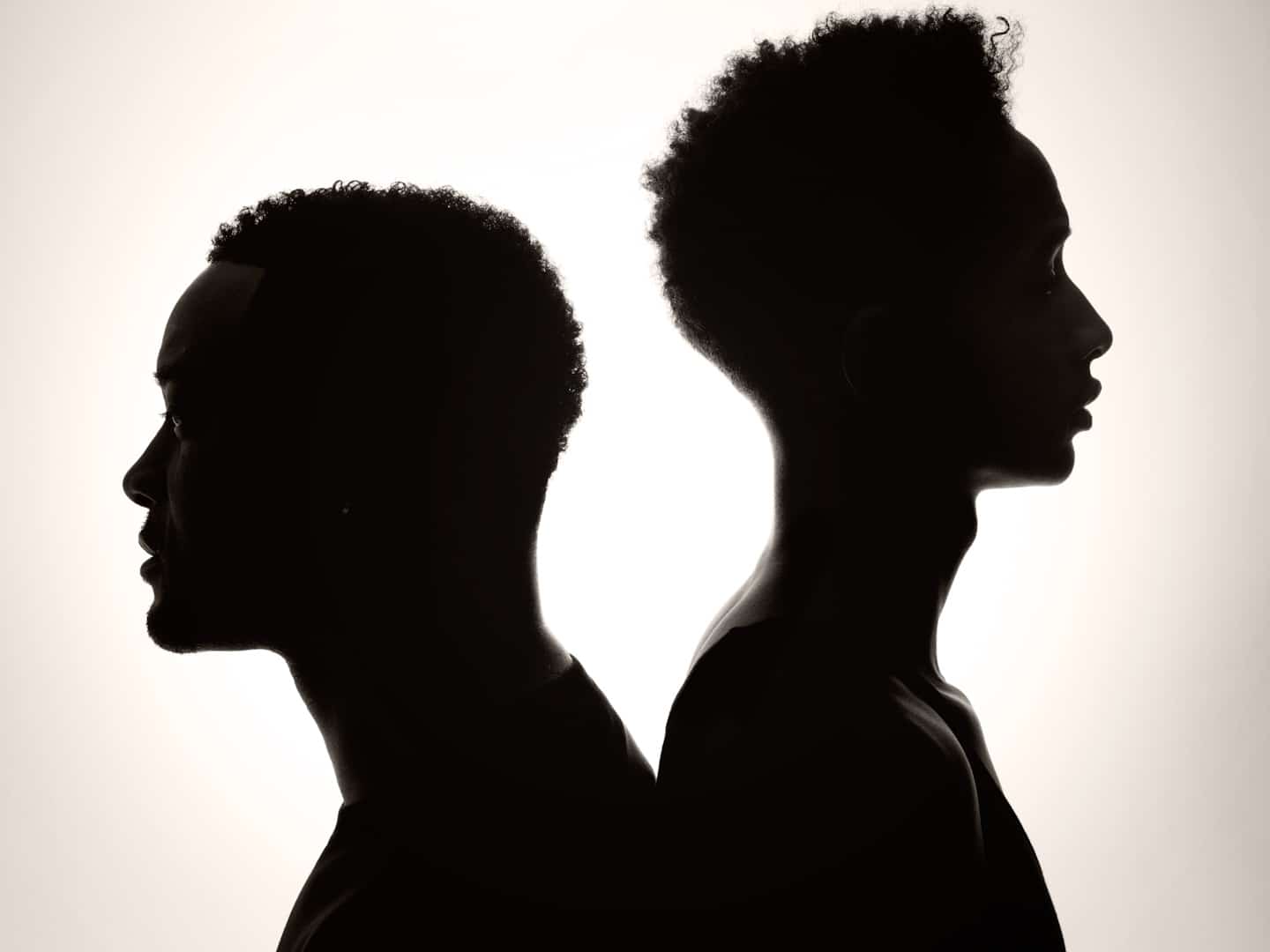
Will Smith & Jayden Smith – Art Streiber
It occurs to me, do you prefer it now or before digital? Forget the cameras and the technology. But just the industry?
I would hesitate like crazy to say that I would prefer one over the other. There are benefits to both, and there were issues then and there are issues now. Not the least of which is, “we sent the proofs; they’re in the mailroom.” Or “FedEx didn’t deliver them.” So there’s that. Both then and now have their pluses and minuses. So they’re just different. If you get into the “it was better then”, you’re not…
That’s the first sign you’re over the hill!
Exactly. Exactly. But I will say that, and I don’t know other creative industries well enough to know for sure, but I gotta say, ours has changed/evolved more than anybody else’s. Is that fair to say? Filmmaking, music…
It’s not unreasonable! I know you taught at Art Center, and you teach at the Palm Springs…
I’ve done the Palm Springs Photo Festival for the last four years. I’ve done Photo Plus for the last nine. I enjoy it.
What is it about teaching that you enjoy?
Well, there’s a couple different things. One is that I never really had any mentors, and the two and half or three people who were mentors actively discouraged me from doing this. I feel like there are a number of things about this profession that you just don’t know until you get really into it. So if I can educate or share that with an aspiring photographer, I’m happy to. I feel like I’m paying it forward somehow. Kaley Cuoco – Art Streiber
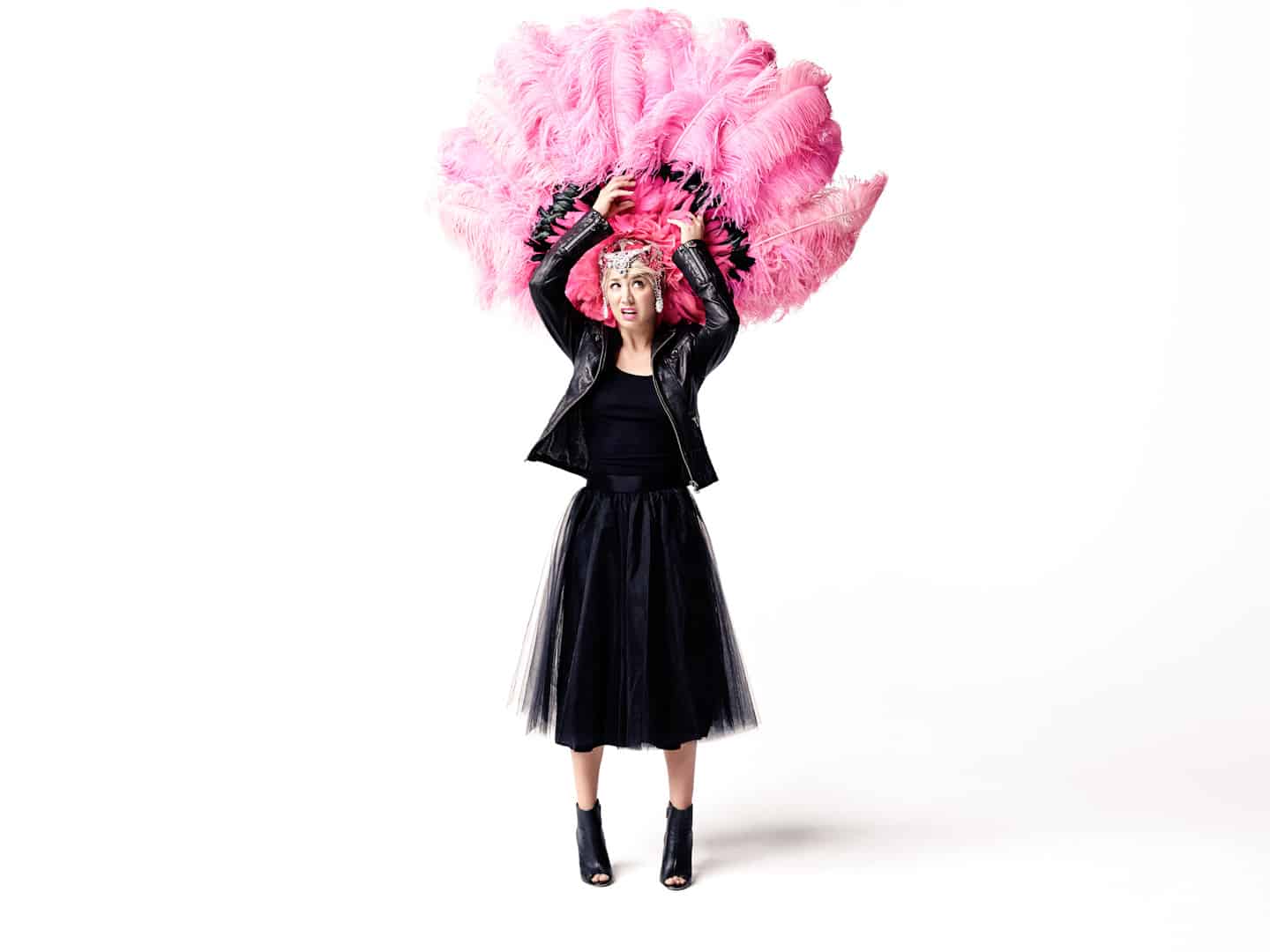
Has teaching informed your own work?
Absolutely. I’m a big believer in “you don’t know what you know until you explain it to someone else.” There are things I take for granted that somebody who hasn’t been doing this as long as I’ve been doing this might not know. It’s not threatening me to share this information, because I also know that I’m going to have twelve or twenty people in front of me and say “this thing”. And “that thing” may not register with more than four or five. And even if it does they’ve got to figure out how to apply it.
And that’ll be through their own lens.
Exactly.
How do you deal with imitation?
You know, it’s flattery, it’s fine. There’s nothing you can do about it. And truly, if you really dig into Avedon’s work, we’re all descendants of Avedon. I think there have been some very original voices, but even those original voices were inspired by…
They’re part of a lineage.
…exactly, exactly. We’re not reinventing the wheel. We don’t exist in a vacuum. So to that extent, I’ve definitely emulating and imitated. But I’m very conscious to make this look like my own and not like this other thing.
And finally: How would you describe your photos?
How would I describe my photography? Wow, that’s a trap! What I think I’d like to be achieving is a portrait that is revealing, interesting, dynamic, engaging. I want to elevate my subjects; I want the viewer to come away with a little bit better understanding of the subject, a connection with the subject. I like to use the word “elevated”, I like to use the word “noble”. I really want empower the subject, my subjects. Empower is the wrong word…..maybe empower is…the right word.
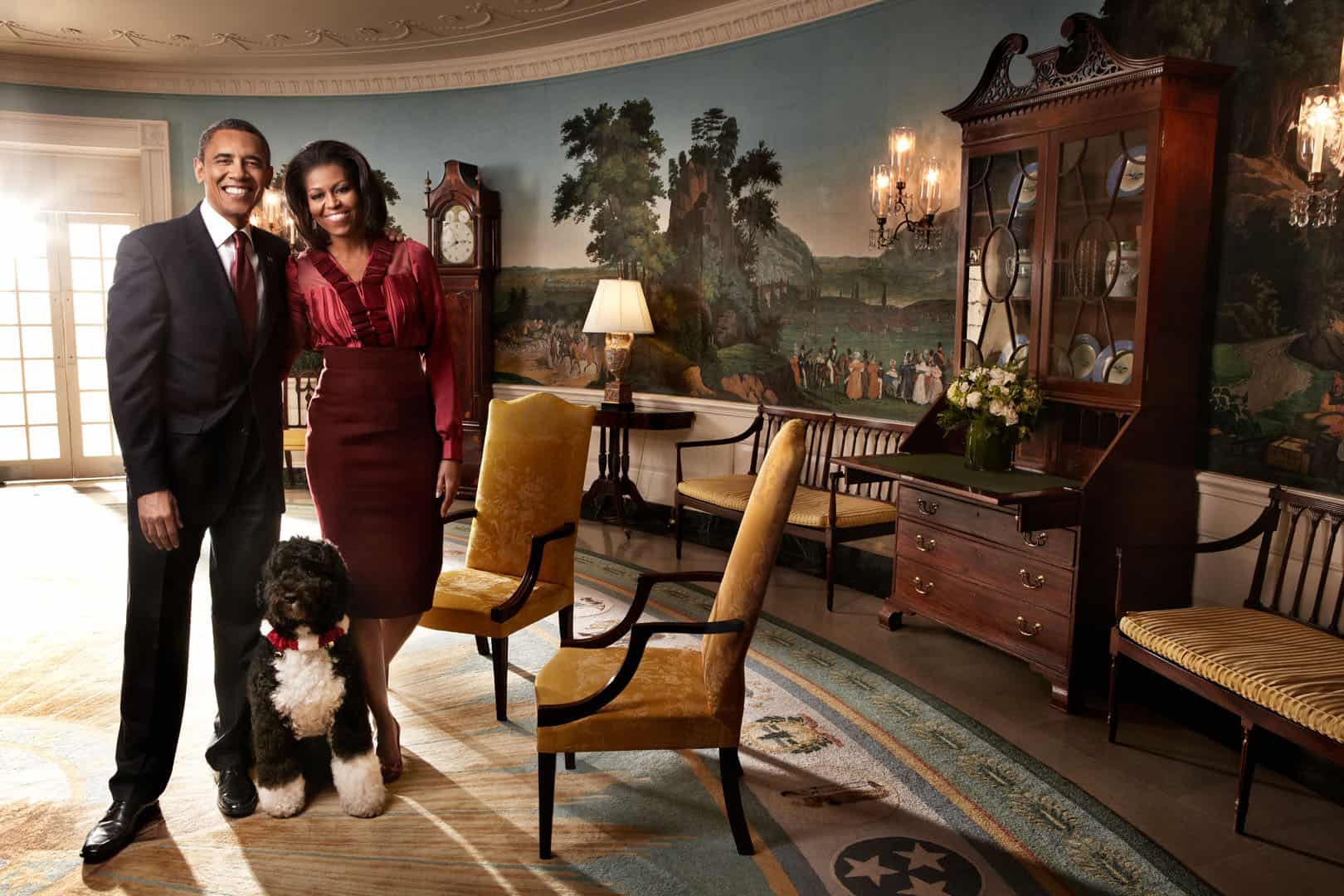
President Barack Obama & First Lady Michelle Obama – Art Streiber